Day 2 of a three day Late Autumn Tour. It was originally forecast to rain for much of today, which it thankfully didn’t. It was rather grey and overcast all day though, and it did spit with drizzle around midday before some rain finally arrived just as it was getting dark this afternoon.
On our way up to the coast, we drove round via Choseley. There were a couple of Corn Buntings on the wires but typically another car appeared behind us when we were stopped in the road for a look and they flew off. We pulled up a little further along, but there were just a few Linnets on the wires now. A couple of Yellowhammers flew over and a large flock of Chaffinches was put up out of a field further up by a tractor. Several small groups of Golden Plover flew past high overhead.
A Chinese Water Deer appeared through the hedge at the top of the field opposite, and then we saw that it was being chased by a dog. The chase continued across the whole of that field and the next one, the two disappearing into the trees away on the edge of Choseley village some way off to our left. Two other dogs followed. The owners were probably on the footpath about 1/2 mile away in the other direction, on top of the hill, presumably oblivious to what their dogs were up to.

We could hear Pink-footed Geese calling and looked over to see a succession of small flocks dropping down towards the Thornham Road. We drove round, and found them feeding in a stubble field – presumably they are still struggling to find harvested beet fields locally. We had a good view of them from the shelter of the minibus, along with lots of gulls, Woodpigeons and several Stock Doves and another Chinese Water Deer.
Continuing on down to Titchwell, we walked round to the overflow car park but there were already several vehicles parked there and no birds in the bushes now. Looking over the paddocks beyond, it was interesting to see three Lapwings displaying at this time of year, the two males in tumbling display flight and singing briefly. There were several Blackbirds in the hedge at the back and a single Redwing flew over.
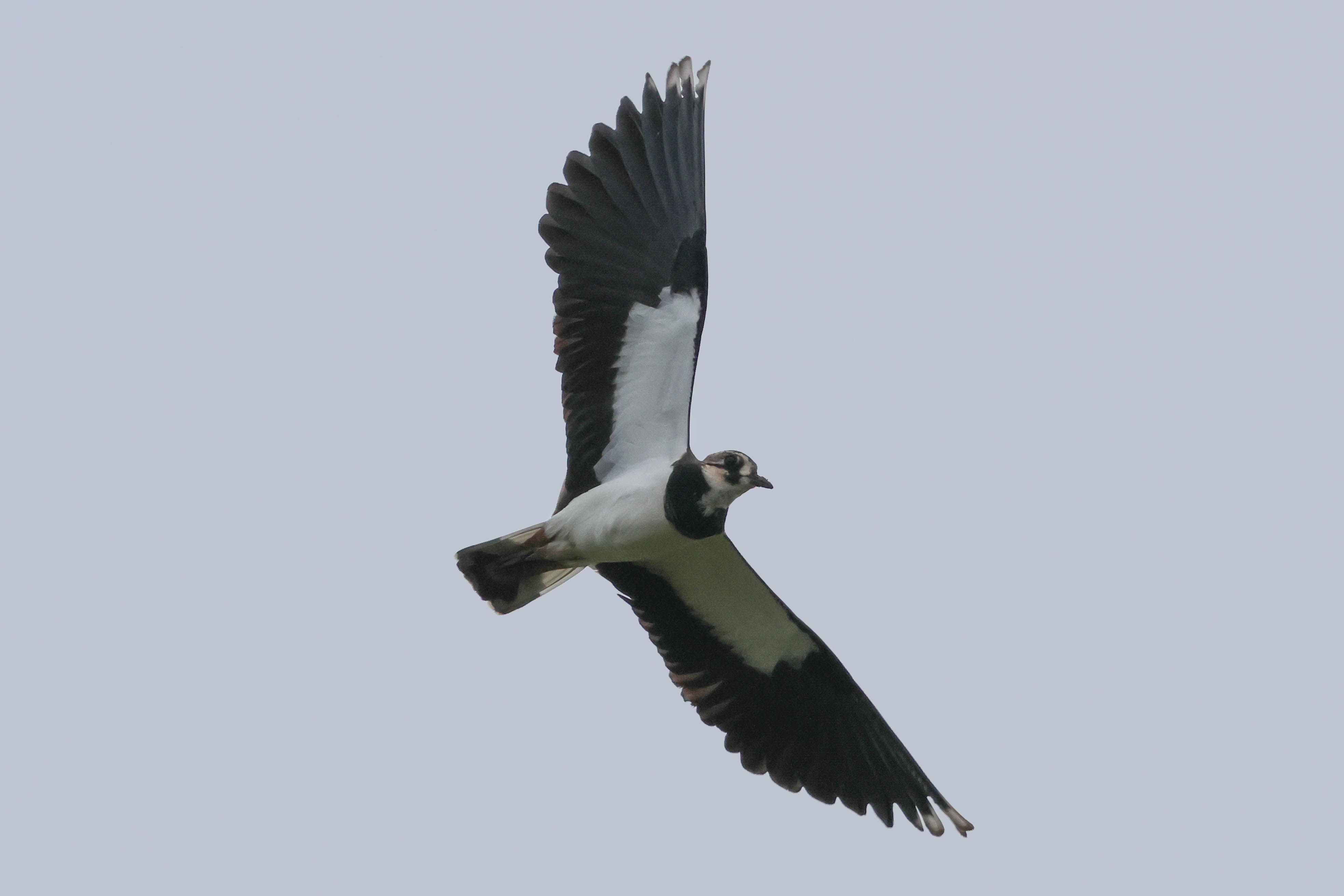
As we made our way round to the Welcome Hub, we stopped to watch a Long-tailed Tit in the sallows right above our heads. There were lots of finches feeding in the alders around the Visitor Centre, mostly Goldfinches but we heard Bramblings calling, and then picked out several in the top of one of the trees. When the Goldfinches all flew to another tree, we could see several Siskins feeding with them too.
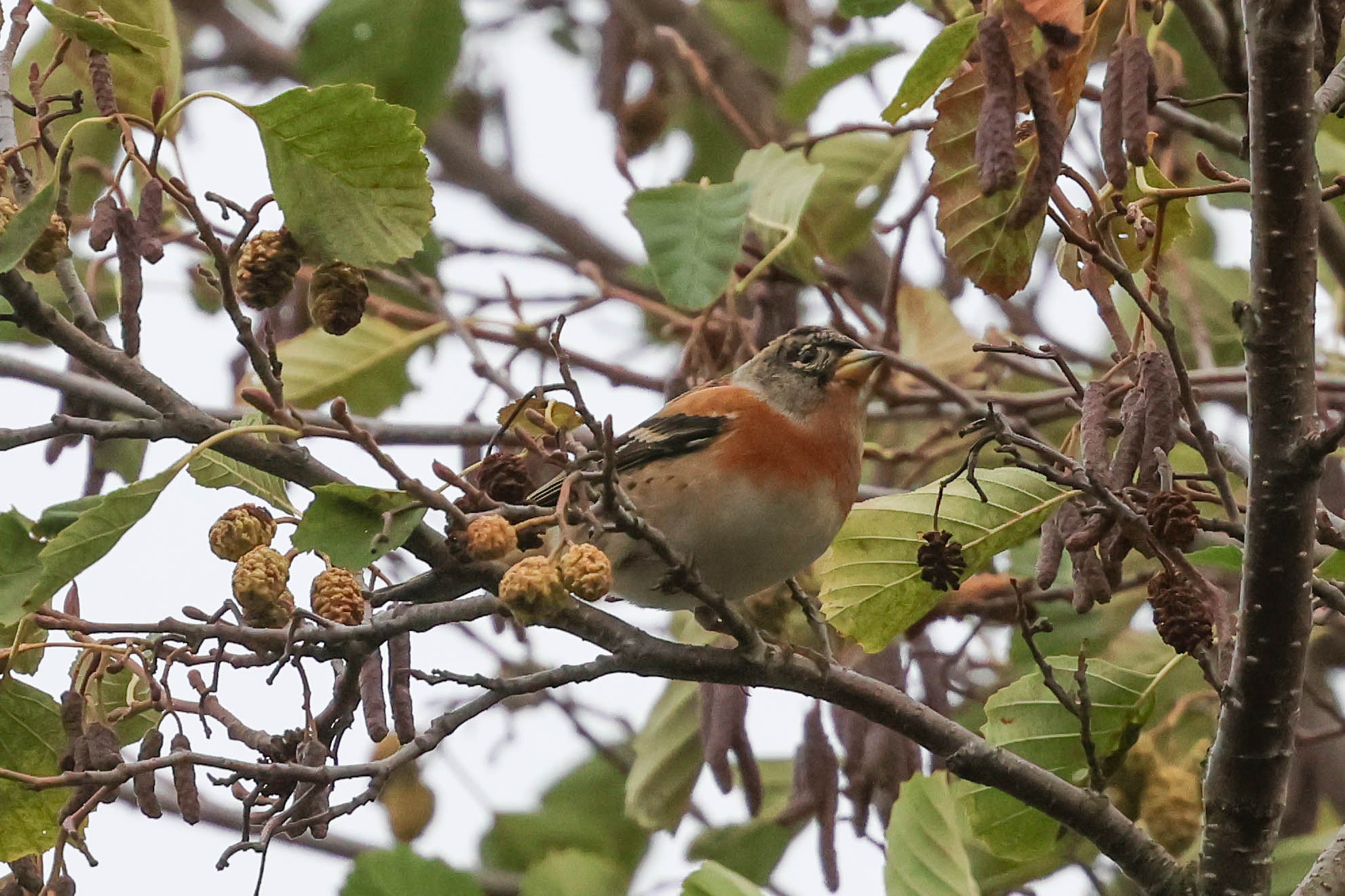
As we walked out onto the reserve, we scanned across the reedbed to see if there were many birds moving this morning. A few Chaffinches flew over, along with a succession of small groups of Starlings, a small flock of Woodpigeon and a group of Lapwings. Two Ravens flying through were a bit more of a surprise – still quite a scarce bird in Norfolk.
A Marsh Harrier drifted over the back of the reedbed, a few Reed Buntings flew across the path and we could hear several Cetti’s Warblers singing from deep in the reeds. Stopped by the reedbed pool, a lone female Goldeneye was diving out in the middle, the first we have seen here this autumn, along with a couple of Little Grebes and a Tufted Duck.
Four Whooper Swans flew in over the Freshmarsh, trumpeting, and came right over our heads. We watched them carry on west towards Thornham. Less than 40 mins earlier, they had been seen passing Salthouse and later they were reported again heading south over Heacham, presumably heading for the Ouse Washes for the winter. A Red Kite was up over the back of the Thornham grazing marsh.
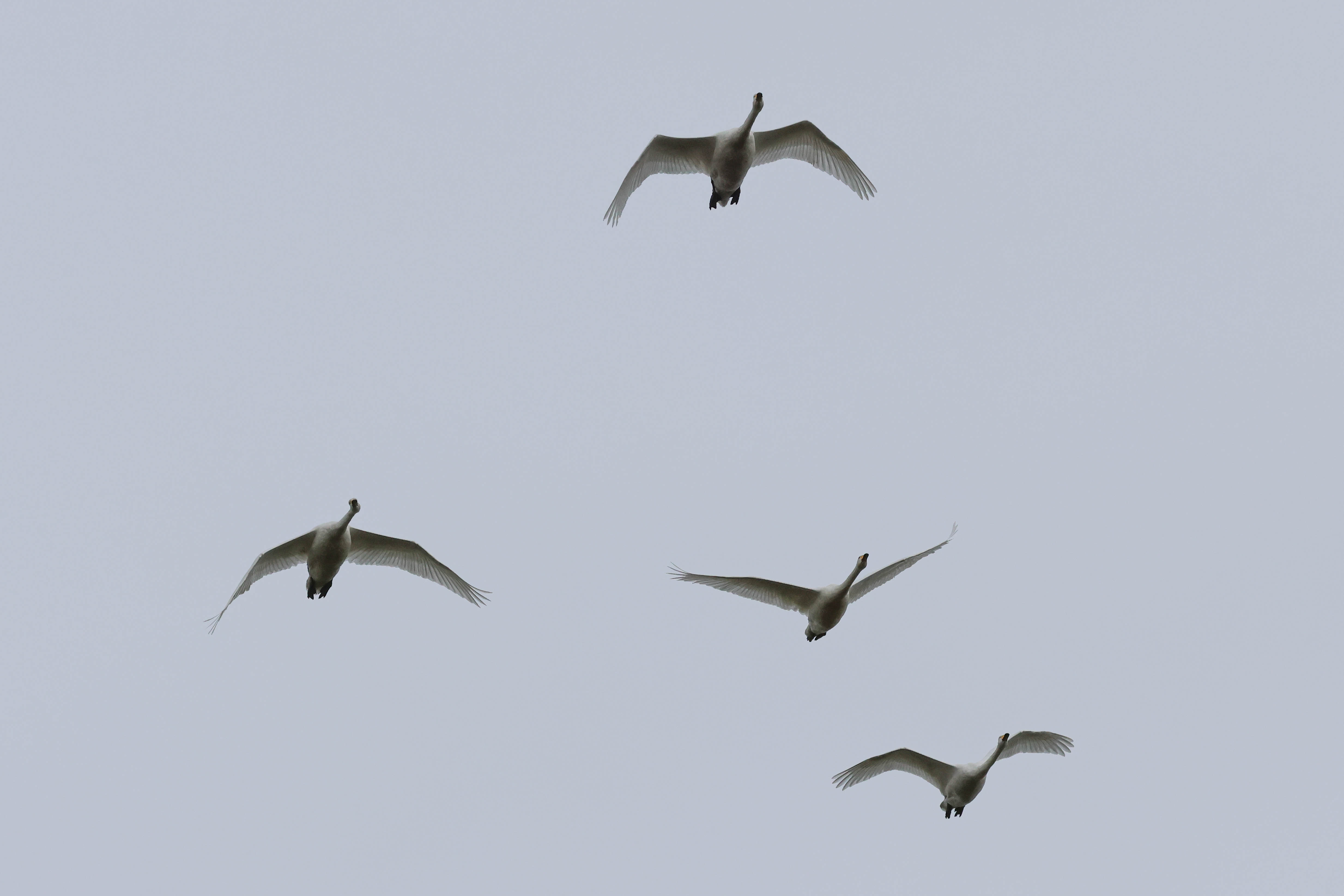
As we passed Island Hide, we could hear a Water Rail squealing from deep in the reeds. We stopped on the bank to scan the Freshmarsh – there were several Avocets still here, feeding up to their bellies in the deeper water further back. Wildfowl numbers are growing steadily as birds return for the winter – there were lots of Shoveler, Wigeon and Teal, most of the drakes now starting to emerge from their dull eclipse plumage, and several Shelduck.
There were a couple of hundred Golden Plover roosting mostly on the new bund today, remarkably well camouflaged. Even though the weather was overcast, they still looked stunning close-up through the scope. Several Ruff and a Ringed Plover were on the next compartment of Freshmarsh, beyond the bund.

As we walked round to Parrinder Hide, a pipit dropped over the hide calling. From inside, we eventually found it on one of the islands, a typically dark and swarthy Rock Pipit. Interestingly it was wearing a red colour ring, although unfortunately it flew off before we could read the code. This is from a Norwegian ringing scheme, the source of many of our wintering Rock Pipits here which are of the Scandinavian subspecies.
Continuing out towards the beach, there were several Curlews, Black-tailed Godwits and Redshanks feeding in the muddy channel on the far side of Volunteer Marsh. Another Black-tailed Godwit was feeding very close to the path on the Tidal Pool, but with the tide out at the moment there was not much else on here now.

Out on the beach, the mussel beds were still exposed and most of the waders were feeding out here. We walked down the beach for a closer look. There were several Bar-tailed Godwits on the shore and on the mussel beds which we got the scope on, and at one point had both species of godwit together for a useful side-by-side comparison. There were also several Knot and Turnstone, a couple of Sanderling, and lots of Oystercatchers.
There had been a Spoonbill out here earlier, but it was rather elusive at first, feeding in the pools hidden in the mussel beds. Eventually it appeared and we got a good look at it – a juvenile, with fleshy coloured bill. Most of our summer Spoonbills have long since gone down to the south coast for the winter. When we noticed the waders on the beach all looking skywards, we looked up to see a Marsh Harrier coming in high over the beach, presumably a fresh arrival from the continent.
There were good numbers of Red-throated Divers offshore, many in grey and white non-breeding plumage, but one still had a lot of summer red left on its throat. There were several Great Crested Grebes close inshore and scanning through we found a single Slavonian Grebe with them – much smaller and shorter billed. A large raft of Red-breasted Merganser were further out, over towards the end of Scolt Head.
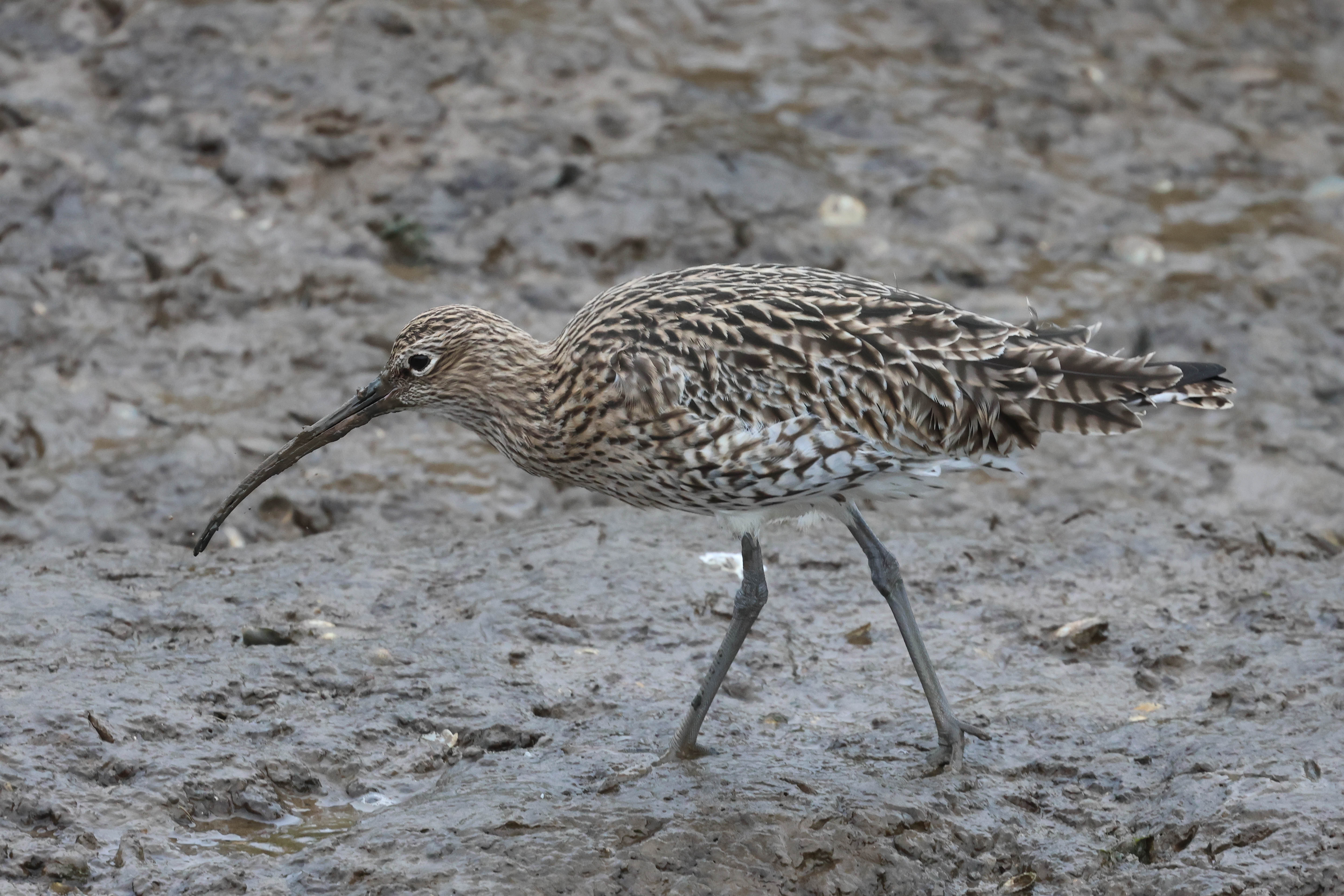
On the walk back, as we stopped to photograph a Curlew feeding right next to the path on the Volunteer Marsh, we heard a Lapland Bunting call, but only once and we didn’t see where it was. Then back at the Freshmarsh, we glanced over at the small group of gulls gathered by the small brick island as we passed and noticed an adult Mediterranean Gull in the middle. We had the scope on it, admiring its white wing tips, heavier, redder bill and black bandit mask, when the Spoonbill dropped in right behind.
The Brent Geese were commuting in and out from Thornham saltmarsh, coming into the Freshmarsh to drink and bathe. There seem to be good numbers of stripe-winged juveniles this autumn, hopefully indicating a good breeding season in Siberia this year.
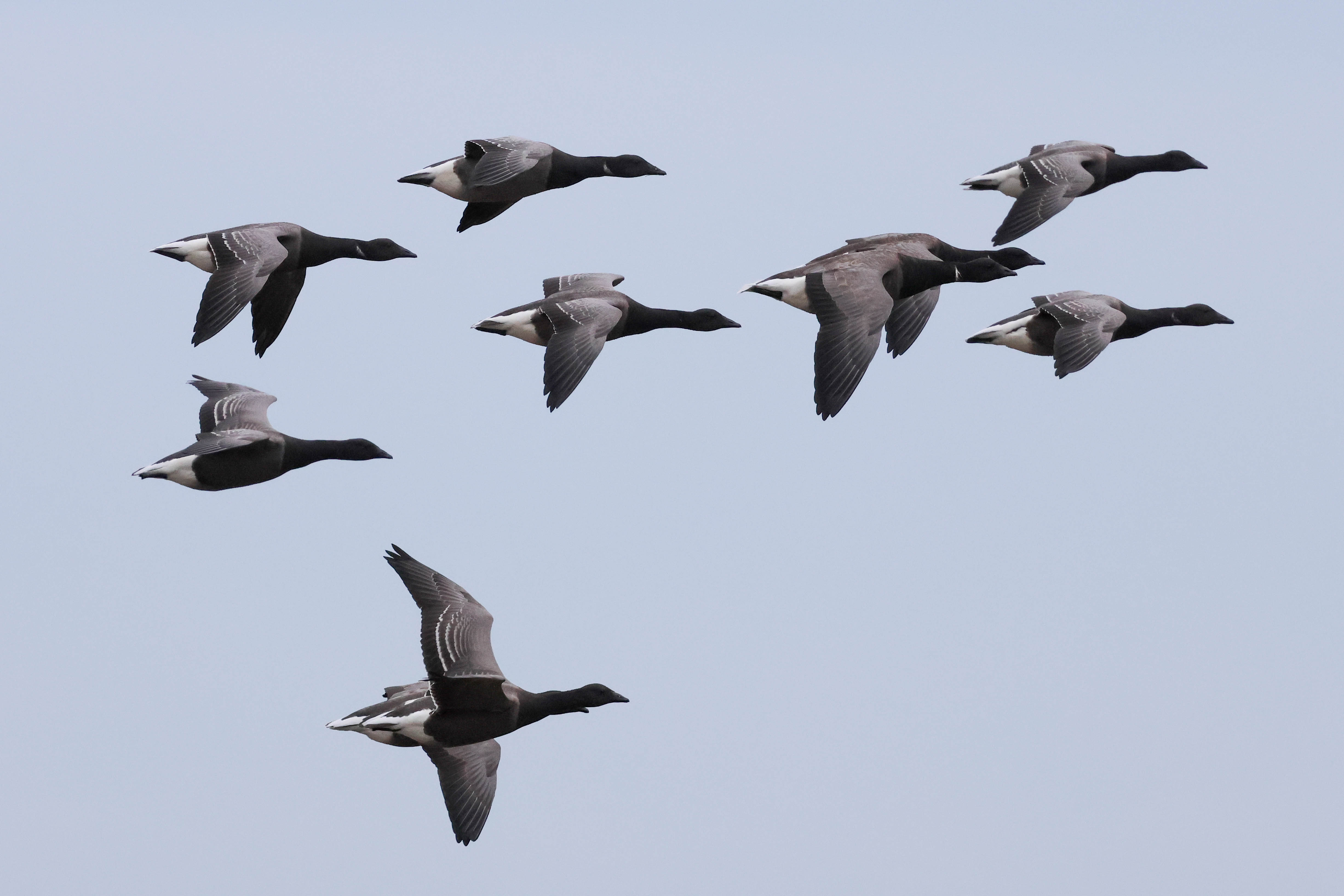
It was time for lunch, so we made our way back to the picnic area. Afterwards, we had a quick walk out on Fen Trail. A Goldcrest was feeding with tits by the Visitor Centre as we passed. Patsy’s held lots of Gadwall, a couple of Little Grebe and several Coot, but there was no sign of any snipe in the cut reed down at the front today. As we made our way back, we came across a tit flock with one or two Coal Tits and another Goldcrest. A couple of Brambling landed briefly in the trees.
We made our way round to Snettisham for the remainder of the day. It was forecast to be a fairly big tide this afternoon, although not quite big enough to cover all of the mud, and the brisk southerly wind would hold the tide back a little. Still, we hoped to see some nice flocks of waders gathering.
When we got out onto the seawall, there were lots of Oystercatchers, Bar-tailed Godwits and Knot already gathered away to our right, off towards the sailing club, so we got the scope on them. There were also several Grey Plovers on the mud close in, including one still with lots of summer black on its underparts which flew in. Lots of Dunlin were still busy feeding on the edge of the channel beyond. A single Avocet was roosting with the ducks higher up.
The waders were very jumpy today and from time to time all the larger flocks out on the mud took to the air, mostly Knot and Bar-tailed Godwits swirling round in tight groups, twisting and turning, making shapes out over the Wash. Always great to watch.
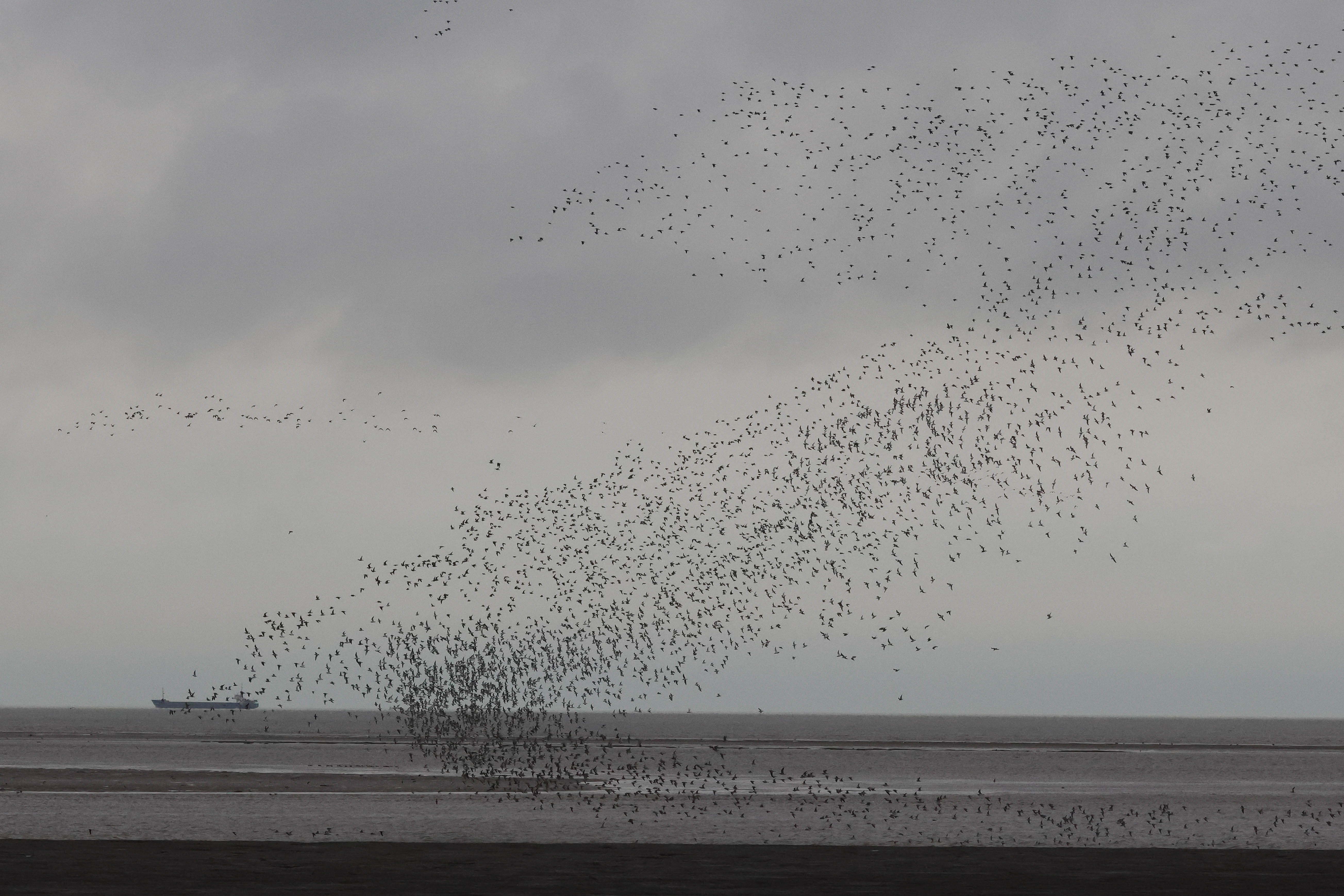
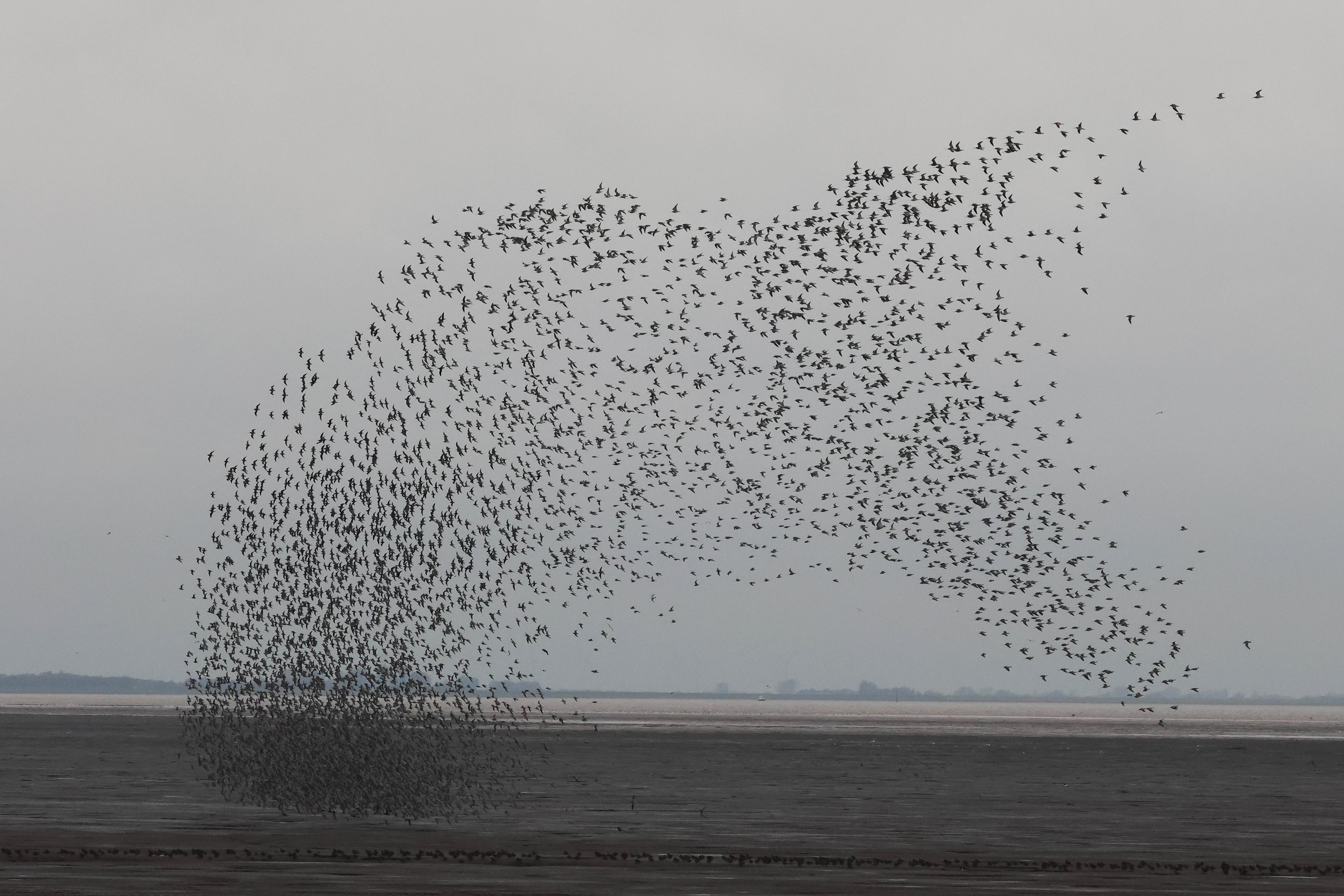
A Rock Pipit on the sea defences dropped down to feed on the edge of the mud. A flock of twenty or so Linnets flew in and landed in the short saltmarsh vegetation. We could hear Pink-footed Geese calling, and looked out to see a couple of large skeins flying in from the far side of the Wash before dropping down onto the mud in the distance. Half of them took off again shortly after and flew in past us, presumably heading inland for a late feed or off to a different roost site for the night.
The tide was rising quickly now. The Bar-tailed Godwits away to our right gave up quite quickly and flew past, landing on the dry mud higher up. Most of the Oystercatchers stuck it out until their feet were wet, before they started to peel off.
It was rather grey and gloomy anyway and the light was starting to go quickly now, so we continued on down to the end. Another huge mass of Pink-footed Geese flew in across the Wash and landed out on the mud to roost. We had planned to walk down to Shore Hide, but a quick scan from the causeway suggested there was not much different to see on the Pit. It was also finally starting to spit with rain now, so we decided to call it a day and make for home. We had enjoyed a very good day and stayed mostly dry!
















